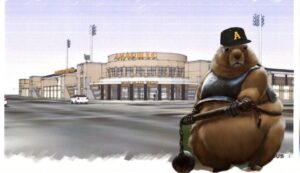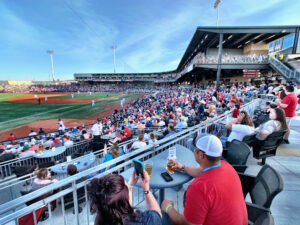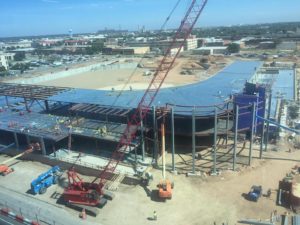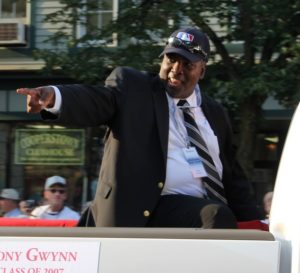
I’ve spoken already about my hope that Amarillo can reel in a baseball franchise that would play ball in a new downtown ballpark.
What I want to explore briefly here today is why the potential new franchise is so much more desirable than what the city has at this moment, which is a “franchise” in name only.
The current baseball team calls itself the Texas AirHogs. It is an “independent” team that splits its home schedule between Amarillo and Grand Prairie.
When these guys play their Amarillo half of their “home” schedule, they suit up and perform at the Potter County Memorial Stadium, which in reality is a dump.
I’m not sure what next season will bring us. The AirHogs might go somewhere else next year. They might devote their full home schedule to Amarillo. Or, they might decide to stay full-time in Grand Prairie.
The push now is on to lure a Double A franchise from San Antonio. The Missions are affiliated with the San Diego Padres of the National League. The Padres appear to be a well-run major-league franchise. They produced a Hall of Fame outfielder, the late Tony Gwynn. Indeed, Gwynn finished the 1981 season in Amarillo, hitting .462, which was a precursor to the brilliant career he forged with the Padres.
Amarillo is no longer a one-horse burg known only for Cadillac Ranch and the gigantic steak. We’re on the cusp of passing the 200,000-population barrier; we might already have passed it, for all I know. We are blessed with a healthy local economy and an increasingly diversified work force.
The city has committed to building a downtown ballpark. It cost is about $50 million. Demolition and construction will begin perhaps later this year. The city is now negotiating with the sports group that owns the Missions to bring that franchise to the Top of Texas.
My hope is that the city can sell itself to the Missions, persuade them to come here, rather than go somewhere else. My expectation doesn’t yet match my hope, but the gap between them is narrowing.
The Amarillo City Council has done a good job of jerking my emotions around. The council occasionally says the right things to assuage my concerns about the direction the city might be going. Then some council members blurt out intemperate remarks that get people’s attention — for the wrong reasons.
An affiliated minor-league baseball franchise would be wonderful for Amarillo. That it would play baseball in a new venue downtown would produce a fine return on the investment being made in that venue.
Again, this only is a hope, but I think it’s a reasonable one: The crowds attending baseball games downtown could bring plenty of what we could call “recreational revenue” to many of the businesses that would be clustered in the downtown district.
I will presume the city is negotiating with the group that owns the Missions is bargaining in good faith. If it comes to pass, as one council member has suggested will happen soon, then the city will reap the benefit.
How do I know that? It’s happened thousands of times already in many American cities. It surely can happen here.
I believe it will.







